Introduction:
Audio engineering is both an art and a science, combining technical knowledge with creative intuition to capture, manipulate, and enhance sound. Whether working in music production, film, television, or live events, audio engineers play a crucial role in shaping the sonic landscape of our world. In this comprehensive guide, we’ll explore the fundamentals of audio engineering theory, delve into the software tools used by professionals, and provide practical advice for aspiring audio engineers looking to hone their craft.
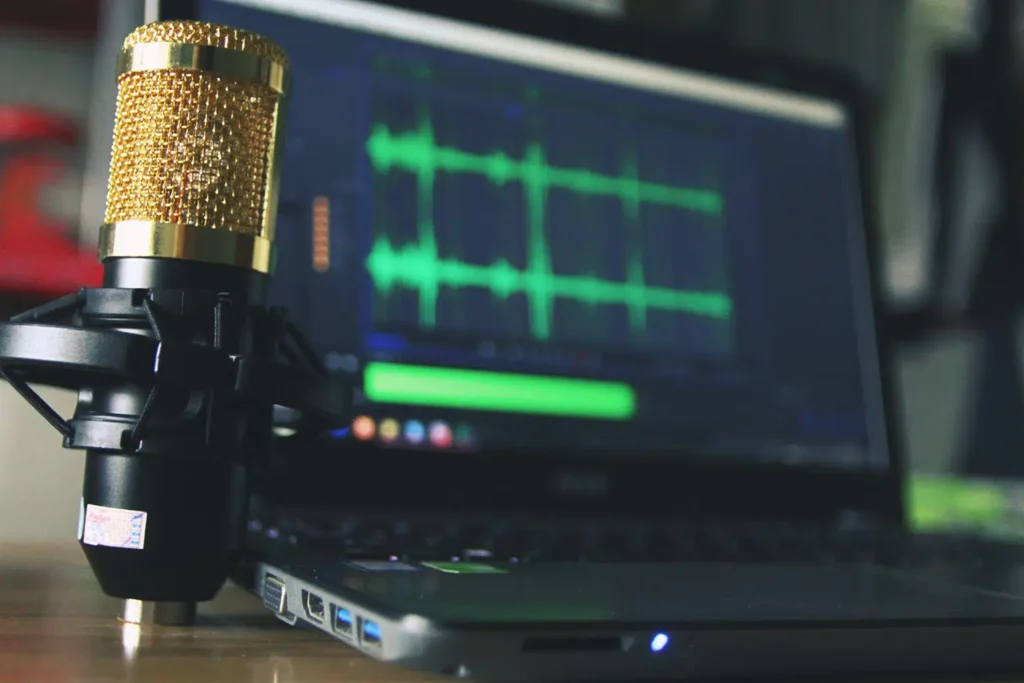
Understanding Audio Engineering Theory:
a. Sound Waves and Acoustics: At the heart of audio engineering lies an understanding of sound waves and acoustics. Sound waves travel through a medium, such as air or water, as variations in pressure. Understanding the properties of sound waves, including frequency, amplitude, and phase, is essential for capturing and reproducing sound accurately.
b. Signal Flow and Processing: Audio signals pass through various stages of processing, from capture to playback. Signal flow refers to the path that audio signals follow within a recording or playback system, including microphones, preamps, mixers, effects processors, and speakers. Understanding signal flow and processing techniques, such as equalization, compression, and reverb, allows audio engineers to shape the sound to achieve desired outcomes.
c. Digital Audio Principles: With the advent of digital technology, audio engineering has evolved to include digital signal processing (DSP) and computer-based recording and editing. Digital audio principles involve converting analog audio signals into digital data, processing them using software tools, and converting them back into analog signals for playback. Concepts such as sampling rate, bit depth, and digital signal processing algorithms are essential for working effectively in the digital domain.
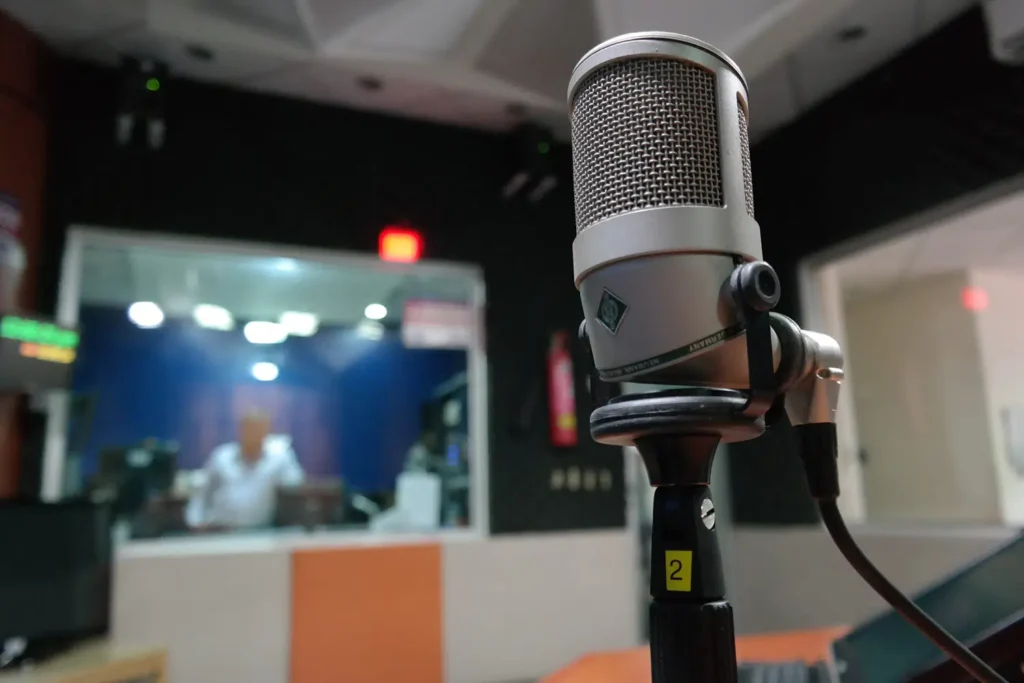
Software Tools for Audio Engineering:
a. Digital Audio Workstations (DAWs):
DAWs are software applications used for recording, editing, mixing, and mastering audio. Popular DAWs include Pro Tools, Logic Pro, Ableton Live, and FL Studio. These platforms provide a comprehensive suite of tools for audio production, including multitrack recording, MIDI sequencing, virtual instruments, and audio effects.
b. Plug-ins and Effects Processors:
Plug-ins are software-based audio effects processors that can be used within a DAW to enhance or manipulate audio signals. Common types of plug-ins include equalizers, compressors, reverbs, delays, and virtual instruments. Third-party plug-in developers offer a wide range of creative tools and effects, allowing audio engineers to experiment and achieve unique sonic textures.
c. Audio Editing and Restoration Tools:
Consider Audio editing software, such as Adobe Audition, Steinberg Cubase, and iZotope RX. These provides powerful tools for editing, repairing, and restoring audio recordings. These tools allow audio engineers to remove unwanted noise, correct imperfections, and enhance the clarity and fidelity of audio recordings.
d. Mixing and Mastering Software:
Mixing and mastering software, such as Waves plugins, FabFilter Pro-Q, and Izotope Ozone, provides specialized tools for balancing and processing audio tracks, shaping the overall sound of a mix, and preparing recordings for distribution. These software suites offer advanced features for equalization, dynamics processing, stereo imaging. Loudness normalization, allows audio engineers to achieve professional-quality results.
e. Sound Design and Synthesis Software:
Sound design and synthesis software, such as Native Instruments Kontakt, Spectrasonics Omnisphere, and Serum, allows audio engineers to create custom sounds, textures, and musical elements using virtual instruments and synthesizers. These software instruments offer a vast library of sampled sounds. While using synthesized tones, and customizable parameters, this allows users to explore and create a wide range of sonic possibilities.
f. Field Recording and Location Sound Software:
Field recording and location sound software, such as Sound Devices Wave Agent, iZotope Spire, and Zoom H Series Handy Recorders, provides tools for capturing high-quality audio recordings in diverse environments. These software solutions offer features for recording, organizing, and also editing field recordings. These tools for adjusting levels, filtering noise, while enhancing audio quality on the go.
g. Live Sound Mixing Software:
Live sound mixing software, such as QSC TouchMix, Behringer X32, and Yamaha CL Series, provides digital mixing consoles and control surfaces for live sound reinforcement applications. These software-based mixing solutions offer intuitive user interfaces, flexible routing options and powerful processing capabilities, while allowing audio engineers to mix and manage live performances with precision and ease.
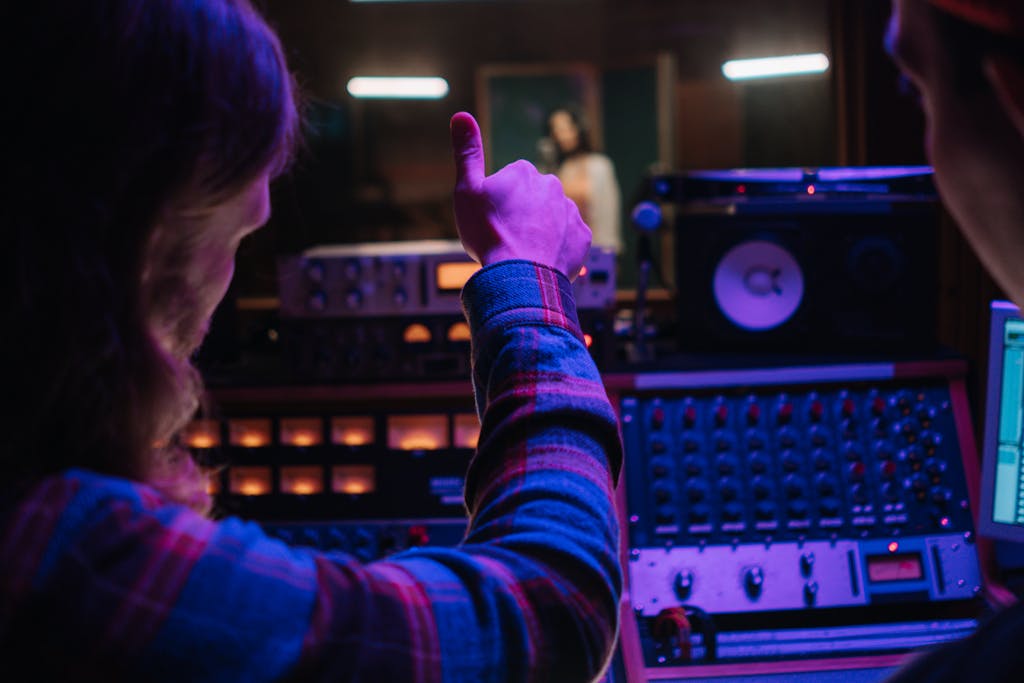
Hardware for Audio Engineering:
a. Audio Interfaces:
An audio interface is a crucial piece of hardware for audio engineers, serving as the bridge between analog audio sources, such as microphones and instruments, and digital audio workstations (DAWs) on computers. High-quality audio interfaces, such as Focusrite Scarlett, Universal Audio Apollo, and PreSonus Studio series, offer features such as low-latency monitoring, high-resolution audio conversion, and multiple inputs and outputs for recording and playback.
b. Microphones:
Microphones are essential tools for capturing sound in the studio and also on location. For recording vocals, instruments, and other acoustic sources, versatile and high-quality microphones such as the Shure SM7B, AKG C414, Neumann U87, and Audio-Technica AT4050 are popular choices. Additionally, specialized microphones such as dynamic, condenser, and ribbon mics offer unique sonic characteristics and are suitable for specific recording applications.
c. Studio Monitors:
Studio monitors, also known as reference monitors or speakers, are critical for accurate monitoring and playback of audio recordings. High-quality studio monitors, such as Yamaha HS series, KRK Rokit series, and Genelec studio monitors, provide a flat frequency response and transparent sound reproduction, allowing audio engineers to make precise decisions about levels, balance, and tonal quality during mixing and mastering.
d. Headphones:
In addition to studio monitors, headphones are essential for critical listening and monitoring in the recording and mixing process. Closed-back headphones, such as Audio-Technica ATH-M50x, Sennheiser HD280 Pro, and Beyerdynamic DT 770 Pro. These offer isolation and accuracy for tracking and monitoring during recording sessions. Open-back headphones, such as AKG K701, Beyerdynamic DT 990 Pro, and Sennheiser HD600. These provide a more natural and spacious sound for mixing and mastering tasks.
e. MIDI Controllers:
MIDI controllers are hardware devices used to control virtual instruments, synthesizers, and DAW software via MIDI (Musical Instrument Digital Interface). Keyboards, such as Novation Launchkey, Akai MPK Mini, and Arturia KeyLab series, offer velocity-sensitive keys, pads, knobs, and faders for playing and controlling virtual instruments and software parameters in real-time.
f. Outboard Gear:
Outboard gear refers to external hardware processors and effects units used for analog signal processing and also sound enhancement. Hardware compressors, equalizers, preamps, and effects processors from brands such as Universal Audio, SSL, Neve, and API. These offer analog warmth, coloration, while adding character that can add depth and dimension to audio recordings.
g. External Hard Drives:
External hard drives are essential for storing and backing up audio files, project sessions, as well as sample libraries. High-capacity, high-speed external hard drives, such as those from Seagate, Western Digital, and Samsung. While providing reliable storage and fast data transfer rates, this ensures smooth playback and recording performance in audio production workflows.
h. Control Surfaces and Mixers:
Control surfaces and mixers are hardware devices used for tactile control and manipulation of audio signals in mixing as well as live sound applications. Digital mixing consoles, such as Behringer X32, Allen & Heath SQ series, and Yamaha TF series, offer hands-on control of channel levels, EQ, dynamics, and effects processing, providing a tactile interface for mixing and editing audio in real-time.
i. Cables and Connectivity:
High-quality cables and connectors are essential for reliable signal transmission and audio quality in recording and playback setups. XLR cables, TRS cables, and balanced patch cables from reputable brands such as Mogami, Canare, and Hosa. While providing low-noise, interference-free connectivity between audio devices, this ensures pristine audio quality throughout the signal chain.
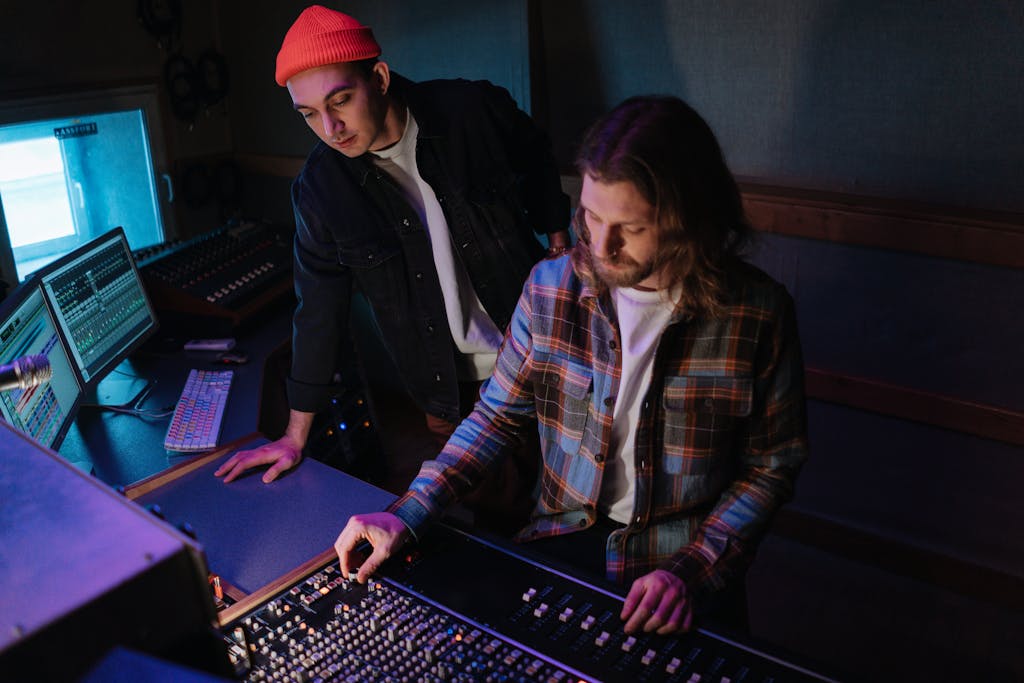
Practical Advice for Aspiring Audio Engineers:
a. Develop Your Listening Skills:
A keen ear is one of the most valuable assets for an audio engineer. Practice active listening by critically analyzing recordings and identifying sonic characteristics, while discerning subtle nuances in sound. Training your ears through listening exercises, blind tests, and A/B comparisons. These tools can help refine your auditory perception while improving your ability to make informed decisions in the studio.
b. Gain Hands-On Experience:
While theoretical knowledge is important, practical experience is invaluable for mastering the art of audio engineering. Seek opportunities to work in recording studios, live sound venues, or film and television production environments. Assist experienced engineers, shadowing their workflows, and observing their techniques. Experiment with different recording setups, microphone placements, and signal processing chains to develop your skills and broaden your sonic palette.
c. Continuously Learn and Adapt:
The field of audio engineering is constantly evolving, with new technologies, techniques, and trends emerging regularly. Stay informed about industry developments by reading books, attending workshops, and participating in online forums and communities. Keep abreast of advancements in audio technology, software tool. These tools and production techniques, while requiring adaptation to learn new skills as the industry evolves.
d. Network and Collaborate:
Building relationships within the audio engineering community can open doors to opportunities for collaboration, mentorship, and professional growth. Attend industry events, conferences, and trade shows to connect with fellow engineers, producers, musicians, and industry professionals. Join online forums, social media groups, and networking platforms to engage with peers, share knowledge, and stay connected with the wider audio community.
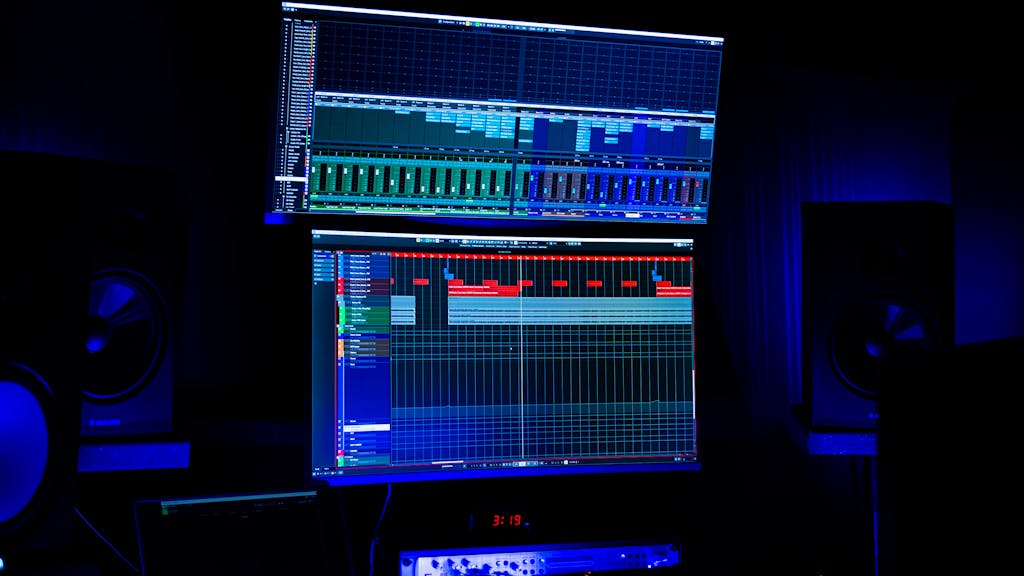
Conclusion:
Audio engineering is a multifaceted discipline that blends technical expertise with creative expression to shape the sonic landscape of music, film, television, and multimedia. By understanding the underlying principles of sound, mastering the tools of the trade, and embracing a commitment to lifelong learning and experimentation, aspiring audio engineers can embark on a rewarding journey to create immersive and impactful audio experiences. Whether working in the studio, on stage, or behind the scenes, audio engineers play a vital role in bringing sound to life and shaping the way we hear and experience the world around us.
More About Our Vocal Coaches
We understand that transitioning is often difficult and undeniably stressful for many people. While Dysphoria affects everyone differently, having an affirming voice that feels right for you can be a major factor in managing dysphoria.
Our vocal coaches help you find your voice by:

Dependable
⸺ & ⸺
Diligent
Having an advanced contact and booking platform to be sure that Your Lessons Now is always there for you, and our admin staff will always be here to help.

Helpful
⸺ & ⸺
Human
Providing a human touch to your scheduling and inquiries, our vocal coaches and also our admin team will assist you every step of the way.

Loud
⸺ & ⸺
Proud
Understanding the importance of providing a judgment-free and empathetic and caring environment, since many of us are LGBTQIA+ ourselves.

Secure
⸺ & ⸺
Respected
Our vocal coaches have extensive training, experience, degrees, and awards to further ensure the best learning environment for our students.
Follow Us on Social Media